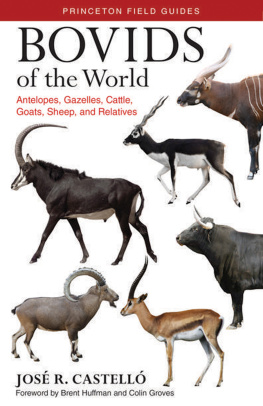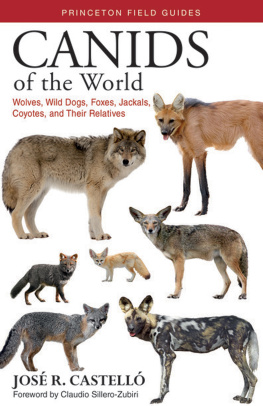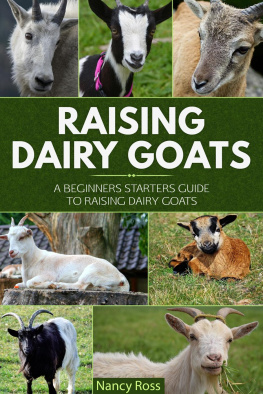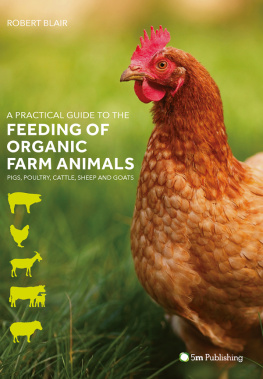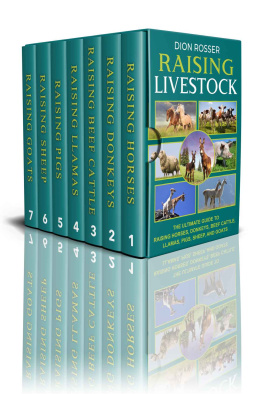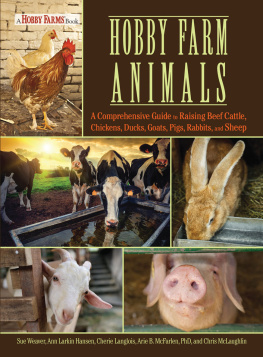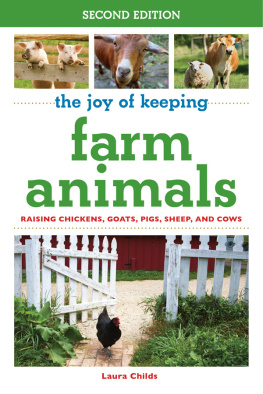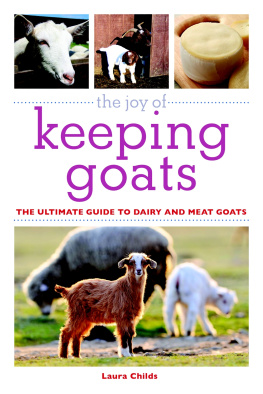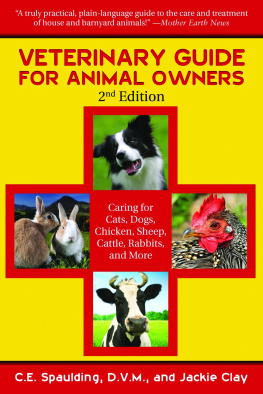Castelló José R. - Bovids of the world - antelopes, gazelles, cattle, goats, sheep, and relati
Here you can read online Castelló José R. - Bovids of the world - antelopes, gazelles, cattle, goats, sheep, and relati full text of the book (entire story) in english for free. Download pdf and epub, get meaning, cover and reviews about this ebook. year: 2016;2015, publisher: Princeton University Press, genre: Home and family. Description of the work, (preface) as well as reviews are available. Best literature library LitArk.com created for fans of good reading and offers a wide selection of genres:
Romance novel
Science fiction
Adventure
Detective
Science
History
Home and family
Prose
Art
Politics
Computer
Non-fiction
Religion
Business
Children
Humor
Choose a favorite category and find really read worthwhile books. Enjoy immersion in the world of imagination, feel the emotions of the characters or learn something new for yourself, make an fascinating discovery.
- Book:Bovids of the world - antelopes, gazelles, cattle, goats, sheep, and relati
- Author:
- Publisher:Princeton University Press
- Genre:
- Year:2016;2015
- Rating:3 / 5
- Favourites:Add to favourites
- Your mark:
- 60
- 1
- 2
- 3
- 4
- 5
Bovids of the world - antelopes, gazelles, cattle, goats, sheep, and relati: summary, description and annotation
We offer to read an annotation, description, summary or preface (depends on what the author of the book "Bovids of the world - antelopes, gazelles, cattle, goats, sheep, and relati" wrote himself). If you haven't found the necessary information about the book — write in the comments, we will try to find it.
Bovids of the world - antelopes, gazelles, cattle, goats, sheep, and relati — read online for free the complete book (whole text) full work
Below is the text of the book, divided by pages. System saving the place of the last page read, allows you to conveniently read the book "Bovids of the world - antelopes, gazelles, cattle, goats, sheep, and relati" online for free, without having to search again every time where you left off. Put a bookmark, and you can go to the page where you finished reading at any time.
Font size:
Interval:
Bookmark:

BOVIDS OF THE WORLD
Antelopes, Gazelles, Cattle, Goats, Sheep, and Relatives
Jos R. Castell
Foreword by
Brent Huffman and Colin Groves
PRINCETON UNIVERSITY PRESS
PRINCETON AND OXFORD
Copyright 2016 by Jos R. Castell
Copyright of the photographs remains with the individual photographers
Published by Princeton University Press,
41 William Street, Princeton, New Jersey 08540
In the United Kingdom: Princeton University Press, 6 Oxford Street,
Woodstock, Oxfordshire OX20 1TW
nathist.princeton.edu
Requests for permission to reproduce material from this work should be sent to Permissions, Princeton University Press
All rights reserved.
ISBN 978-0-691-16717-6
British Library Cataloging-in-Publication Data is available
Production and design by Jos R. Castell, Madrid, Spain.
Printed in China
10 9 8 7 6 5 4 3 2 1
CONTENTS
by Brent Huffman and Colin Groves |
Impalas |
Sunis, Royal Antelope, Pygmy Antelope |
Reedbucks, Waterbucks, Rhebok |
Gazelles, Oribis, Steenbok, Grysbok, Dik-diks |
Klipspringers |
Duikers |
Sheep, Goats, and relatives |
Horse Antelopes |
Tsessebes, Topis, Hartebeests, Wildebeests |
Nilgai, Four-horned Antelope |
Spiral-horned Antelopes |
Bison, Buffaloes, Cattle, Saola |
FOREWORD
I have been waiting for a book like Bovids of the World to be published since I was in seventh grade. In my science class that year, we were given the assignment of creating an identification key for 20 closely related animals. Having just completed a report on rumination, I naturally chose ruminants. (Will you be able to find enough species for this assignment? worried my teacher.) My childhood animal encyclopedia readily yielded 20 species, and although they were all interesting, the ones with horns immediately caught my eye. The horns, with their myriad ridges, curls, and twists, were like stunning pieces of art, the animals that possessed them simply beautiful. By the time I had finished the project, I was hooked. I began scouring my local library, searching for photos of these fabulous horned animals (or, scientifically speaking, the family Bovidae), but all I could find were scattered images. Even when I was in university, the specialized zoological library failed to yield an exclusive and all-encompassing guide to this family of hoofed mammals. So when Jos R. Castell disclosed that he was embarking on a project to display every living species of the family Bovidae in a single volume, I was thrilled and also apprehensive. Thrilled because such a volume would celebrate these species in a way that had never been accomplished before. And apprehensive because, although Bovids of the World has a simple concept, bringing it to fruition would be a massive undertaking.
For starters, Bovidae is the largest and most diverse group of hoofed mammals: it contains an astounding 279 species. (My science teacher neednt have been concerned.) These species show incredible variation in physical attributes, habitat preferences, physiology, and behavior but are all united by the presence of unbranched hollow horns. In no other ungulate family is there such a contrast in size between the largest and smallest species: the massive Asian Wild Water Buffalo (profiled on page 596) can weigh up to 1,200 kg at maturity, while the diminutive Royal Antelope (page 36) may weigh just 1.5 kg as an adult thats nearly a thousand-fold difference! There is so much variation within the Bovidae that most people fail to recognize that it is, in fact, a unified group. Even our vocabulary lacks a popular term that reflects the commonalities. Instead, it fractures the Bovidae into disparate elements that prioritize the familiar (cattle, sheep, goats) and lump together the exotic (antelope is a broad term that even includes a non-Bovid, the North American pronghorn). This elusive vernacular, far from being a hindrance, is a demonstration of why works like Bovids of the World are needed: to highlight the common threads that link the diverse species of this family.
As the idea for this book was taking shape, its already immense scope doubled in size. Until this point, the classification of the Bovidae was well established. Its 140-odd accepted species had seen few changes in the previous half-century: a few subspecies had been elevated to full species, like the Serows (beginning on page 428), and in 1993 a surprising discovery in the forests of Vietnam added a brand new species (and genus!) to the list: the Saola (page 648). But the scientific community was unprepared for the entire family to receive a taxonomic overhaul in 2011. Using the Phylogenetic Species Concept, an evidence-based model for identifying species, Colin Groves and Peter Grubb reexamined the classification of ungulates without relying on previous assumptions. Their revision (Ungulate Taxonomy, Johns Hopkins University Press) put forth a startling theory: Bovidae contains twice as much species diversity as formerly thought. This revolutionary idea has been met with resistance, even though the Phylogenetic Species Concept is currently the most tenable method available for distinguishing species. Rather than accepting the status quo, Dr. Castell embraced this latest taxonomic arrangement with its imposing additional workload. In doing so, he set out to produce an unprecedented guide to new Bovidae and thereby lend visual support to this updated taxonomy.
If this hurdle wasnt enough, I must confess that the goal of using photographs throughout this guide seemed an impossible challenge. The only other volume to visually depict the new Bovid taxonomy (Handbook of the Mammals of the World, Lynx Edicions, 2011) used illustrations. To find photographs of these same species would require significant research, a massive list of contributors, and more than a pinch of luck. Behind every image lies a photographers investment of time, energy, and expertise. Photographing Aderss Duiker (page 260) in Zanzibar, for instance, was the culmination of months of planning, 2 weeks of traveling, 6 international plane flights, 20 hours in Duiker habitat, and 602 clicks of the shutter button. And thats just one species. It is a tribute to Dr. Castells tenacity that he has amassed so many contributing photographers and found consistent views for so many species. Their similarities and differences are emphasized by the removal of the background for each image, depicting them in the consistent manner of field-guide illustrations but with one key difference: with photographs, we get to share in the emotional thrill of observing not just a generic member of a species but an individual with all of its idiosyncrasies. There are some real photographic gems in these pages. For starters, check out the recently described Bangweulu Tsessebe (page 522), the Sudan Bohor Reedbuck (page 70) with its distinctive and unusual horns, and the fantastic variation in colors and markings between the 10 newly elevated Bushbuck species (beginning on page 578).
The beauty of this guide (its stunning images aside) is its simple concept and broad appeal. Readers who are passionate about mammal-watching can use this guide as a reference checklist to identify and keep track of their Bovid sightings. Photographers can look on the few picture-less species in this book as a challenge. (I already have a few ideas for where my next ungulate-finding trip could take me!) And those interested in classification and species identification will find this book an invaluable visual companion to the recent taxonomic changes. Regardless of why you have opened this guide, delving into it will leave you feeling not only informed but inspired by the beauty of the Bovidae just as I first was back in seventh grade. Outside of these pages, many Bovids are struggling for survival. Celebrating their diversity is a crucial step in developing a conservation ethic that ensures the living animals depicted in this vibrant volume do not fade away.
Next pageFont size:
Interval:
Bookmark:
Similar books «Bovids of the world - antelopes, gazelles, cattle, goats, sheep, and relati»
Look at similar books to Bovids of the world - antelopes, gazelles, cattle, goats, sheep, and relati. We have selected literature similar in name and meaning in the hope of providing readers with more options to find new, interesting, not yet read works.
Discussion, reviews of the book Bovids of the world - antelopes, gazelles, cattle, goats, sheep, and relati and just readers' own opinions. Leave your comments, write what you think about the work, its meaning or the main characters. Specify what exactly you liked and what you didn't like, and why you think so.

